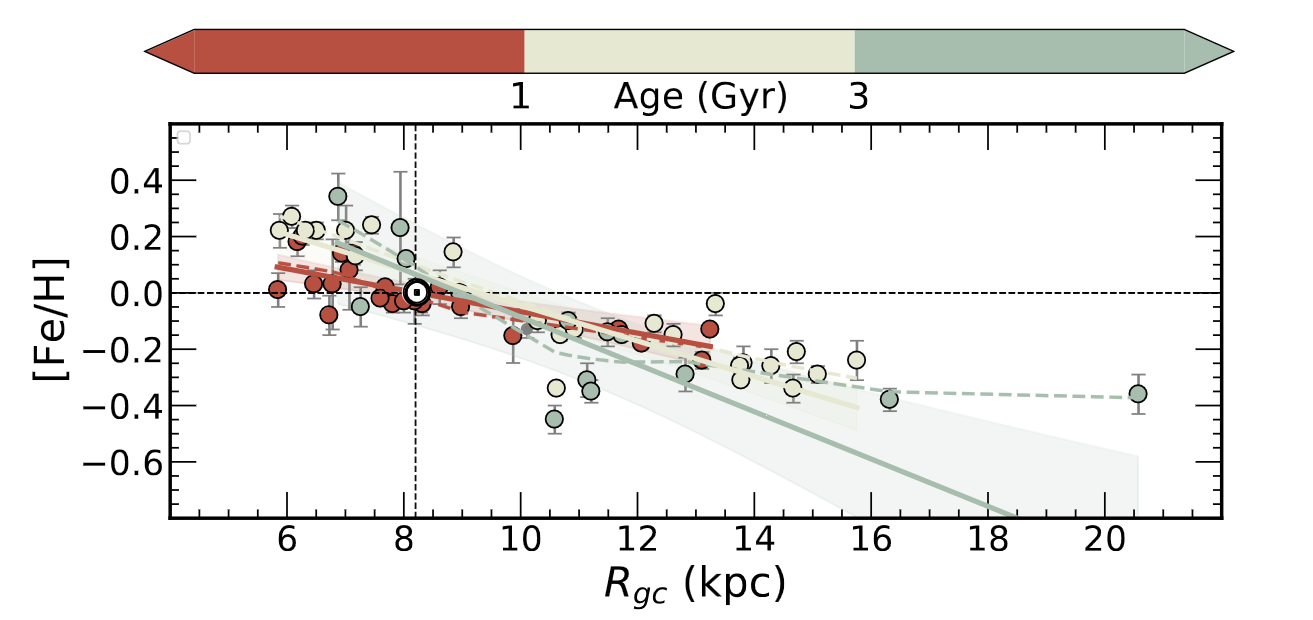The Milky Way radial abundance gradient
Tracing how different regions of the Galaxy enrich in metals over time.

For many years, open clusters have been used to trace the chemical properties of the thin disc of the Galaxy. They are very useful in this respect because their ages and distances can be determined with higher precision than is possible for isolated stars. Because of that, open clusters have been a key in helping investigations of the spatial distribution of elemental abundances in the Milky Way. The spatial distribution of elemental abundances and their time evolution can give major clues to advance the understanding of the formation and evolution of the Galaxy.
In this work, a sample of stars in several open clusters observed by the Gaia-ESO large spectroscopic survey is used to study the Galactic radial abundance gradient and its time evolution using several chemical elements. Open clusters are a type of stellar cluster (in other words, a gravitationally bound association of stars). Stars in an open cluster are formed together from the same molecular cloud at the same time. Therefore, the stars have the same initial chemical composition and age, but a range of different masses.
The sampe of open clusters
The sample analysed in this work has stars from 62 open clusters with ages between 0.1 and 7 billion years, located at Galactocentric radii between 6 and 21 kpc. The figure shows the variation in metallicity ([Fe/H]) as a function of the Galactocentric distance of the cluster. Metallicity is a quantity that is used by astronomers to indicate the total amount of chemical elements that a star has. The scale is logarithmic with respect to the Sun. In other words, a value of [Fe/H] = -1.0, for example, means that the star has ten times less metals than the Sun. In the work, gradients of several other elements are also investigated.
The importance of the results
It was found that there was only minimal evolution of the radial gradient in the last few billion years, indicating a recent decrease in the star formation rate in the thin disc of the Milky Way. Migration plays a secondary role in shaping the gradients, affecting the oldest clusters more, as expected.
This study was made by an international team of astronomers led by Laura Magrini from INAF - Osservatorio Astrofisico di Arcetri, with the collaboration of Dr. Maria Luiza Linhares Dantas, a postdoctoral researcher at the Nicolaus Copernicus Astronomical Centre (CAMK) and Rodolfo Smiljanic, associate professor at CAMK.
Text by Rodolfo Smiljanic

